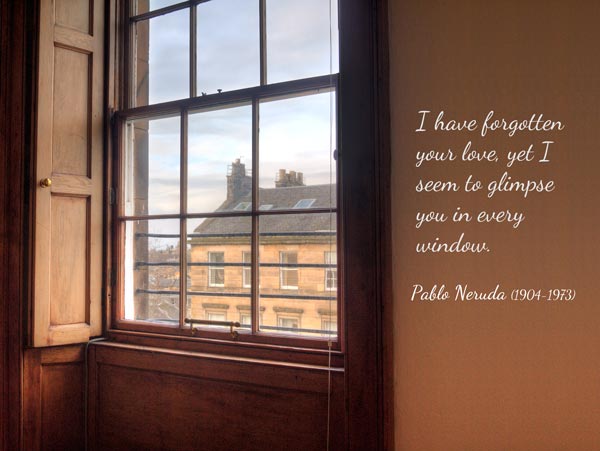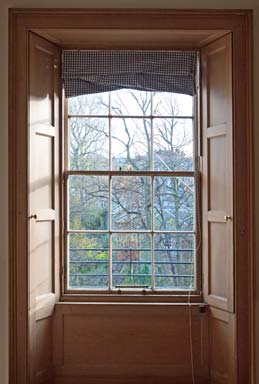
Edinburgh is quite far north of the equator – 56° north in fact. That’s further north than Moscow or Copenhagen.
So every drop of sunshine that can be wrung out of the winter sky is welcome.
This is our first winter in Edinburgh and before we arrived I was worried that the winter might be dark and cold. I had visions of the darkness stretching on interminably, month and after month.
We had also heard that last winter the temperatures were as low as -6°C (21°F) and there was 7 inches (18cm) of snow that lasted for weeks and left some homes stranded.
This winter though there has been no snow at all except for a light powdering a couple of times that disappeared within an hour.
Gales
There was a gale, however, that ripped through Edinburgh in late November soon after we arrived here. When that happened, we had visions of spending months listening to the wind howling and the windows rattling.
And there was another gale in January that felled 34 specimen trees in the Royal Botanic Garden in Edinburgh.
But overall the weather has been mild and we have had quite a number of sunny days this winter. And the skies have been fairly bright rather than dark and overcast as I had feared.
From Whence The Sun Shines
Nonetheless, north is north and in the northern hemisphere the sun shines from the south.
So it is a natural question to wonder why the fine Georgian buildings of the New Town are built on a north-facing slope where they are least likely to catch the sun.
The answer is that it is because of the way that Edinburgh grew in the years before start of the development of the New Town in the 1760s.
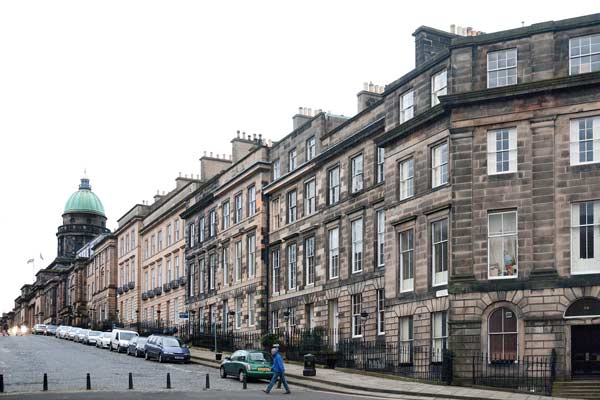
The Old Town
Edinburgh today is cut through east-west by a steep, narrow valley. Once, a river ran through the valley. Nowadays the river is hidden underground and a railway runs along the valley.
The city was originally built south of the valley. This is the Old Town, with the High Street (also known as the Royal Mile), Edinburgh castle, and St. Giles Cathedral.
To the east, down a long, gentle slope, there is Holyrood Palace.
Today there is also the new Scottish Parliament Building across the road from the Holyrood Palace.
The house of John Knox, the Scottish clergyman and a leader of the Protestant Reformation, still stands on the High Street. Knox died in 1572, which gives some idea of the age of the Old Town.
So with the Old Town situated where it was, the most prestigious part of the city known as New Town had to be built on the remaining available ground across the other side of the narrow valley to the north.
Once out of the little valley, the land runs quite steeply downhill and then tapers out gently towards the Firth of Forth, that great body of water that flows eastwards out into the North Sea.
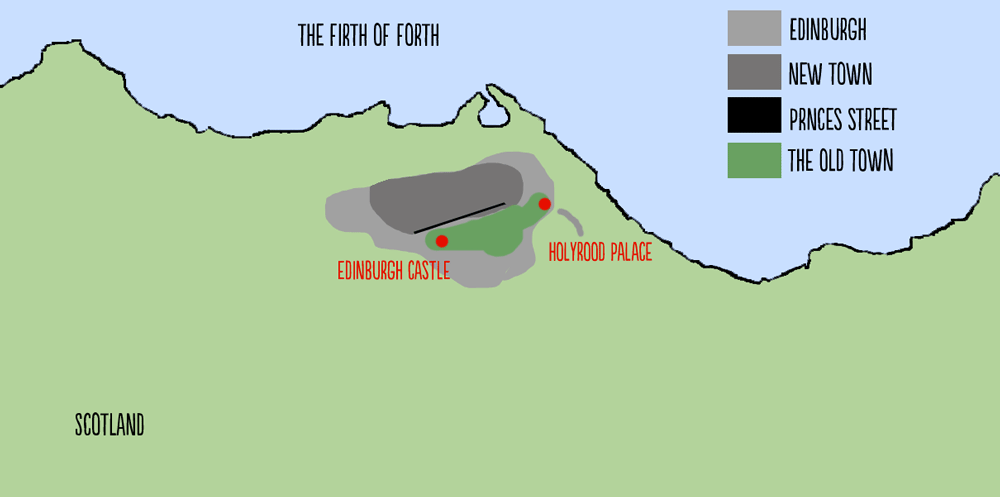
First Build Your Access
So with the prospect of a new and expensive development in the heyday of Scottish wealth, there was just the problem of its location and fact that the site for the development was cut off from the center of the city.
Before New Town could be built there first had to be a connection across the valley. No one wanted to have to climb down into the valley and back up out of it to get to the Old Town and another solution was needed.
One-And-A-Half Million Cartloads Of Earth
The solution was quite neat. One-and-a-half million cartloads of earth from the foundations of what was to become New Town were dumped in the valley and a road built across it leading up to the High Street.
If you visit Edinburgh and stand on the Mound looking over at Princes street and the museums and galleries, it is on those one-and-a-half million cartloads of rock and earth that you are standing.
Princes Street was one of the first streets built in the New Town and it runs north of and parallel to the narrow valley that separated the New Town from the Old Town.
This photograph is looking down from the Mound in the Old Town. Princes Street runs across just behind the park that is, not surprisingly, the green area in the photo.
Nearer to the camera you can see the Art Galleries that were built after the valley was filled in.
I find it funny, somehow, to think that the railway runs below those galleries.
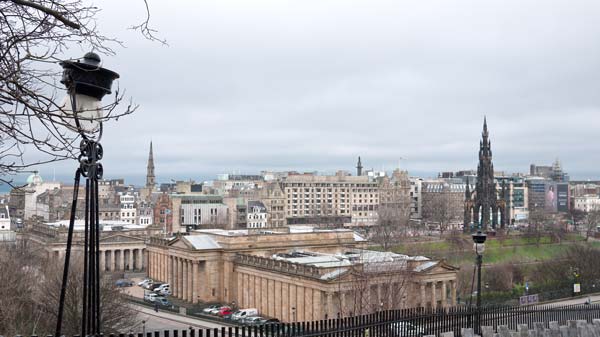
North And South
North is north, and there is no getting away from that. And what that means is that the fine buildings of New Town are facing the wrong way to catch those precious beams of sunlight. That is perhaps why the ceilings are so high and the windows are so tall in the houses – to let in the maximum amount of light.
A Long development
The buildings of the New Town were built in the Neo-Classical style over a 140-year period beginning in the 1760s.
Part of the reason for such a long period of development was that many of the houses and apartments were rented out by the developers to recoup their initial investment. Once that investment was repaid there was money in the pot to continue with the next phase of building.
And so the development moved forward, with renowned architects like John and Robert Adam and William Playfair bringing their talents and designs to Edinburgh.
Who Lived In New Town
I am trying to imagine who might have lived in these rented houses and apartments in Georgian New Town.
It had to people of substance – but why did they rent and not buy outright? Was it characteristic of the period that people rented? Unanswered questions…
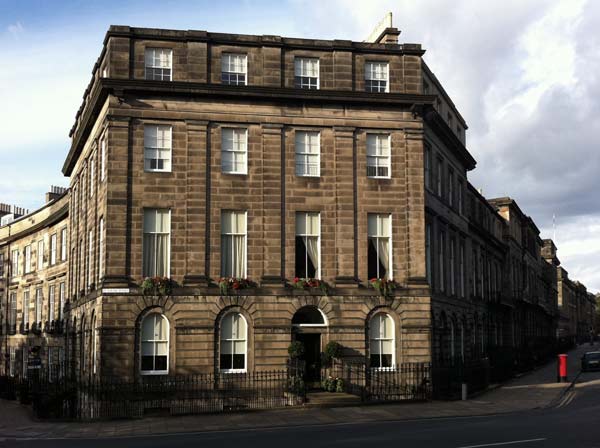
The Layout Of New Town
Most of the streets in New Town run east-west, and while the top end of New Town is on the flat ridge in the center of the city, the bulk of it is on the north-facing slope and at its lower points it runs precipitously downhill.
The architecture is so well preserved that it is easy to picture ladies and gentlemen of the period in their finery – half-present like ghosts – walking on the streets.
My favorite street is Albany Street at the eastern end of New Town. It is a wide street and the buildings are not very tall. So while they are not the grandest in New Town by any means, the proportions are very appealing and the street feels old.
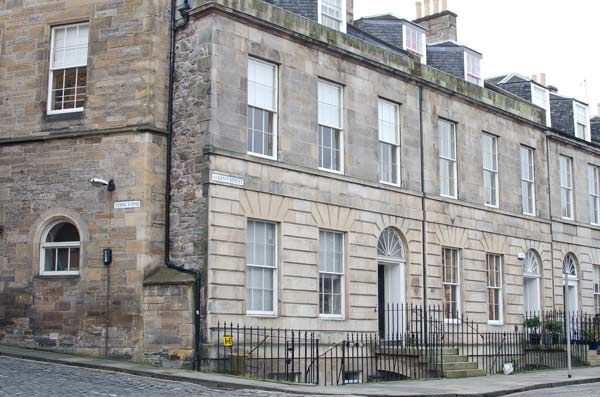
In contrast, there are street and crescents and circuses at the western end of New Town with some building having massive columns that look – to my eye at least – overbearing and unnecessarily self-important.
Almost all the buildings in New Town are faced in ashlar stone. Ashlar describes a way of cutting the stones so that they taper away on all sides from the front face.
Once the walls are built, there is practically no mortar gap visible between the blocks – because the mortar is hidden in a wedge shape behind the front face.
Walk around the side of these buildings however, and the rougher stone is visible.
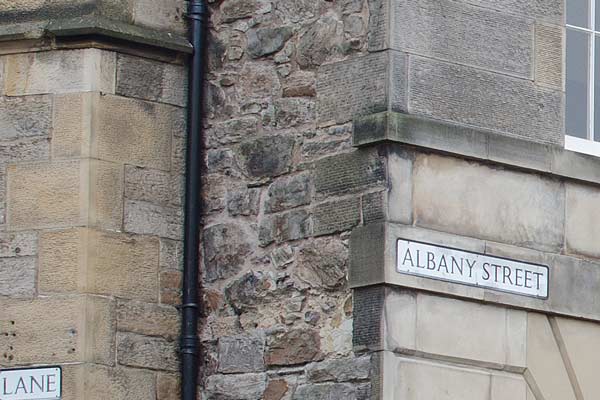
Doune Terrace
Doune Terrace is at the western end of New Town. This photograph is of the end house on the curving crescent of Doune Terrace.
In the second photograph you can see the view from Doune Terrace looking northwards towards Stockbridge and can see here how the road drops down the hill.
Notice the cobblestones. The streets in New Town are all paved with cobblestones which, coupled with the broad streets give an ‘un-21st century’ look that is very strong and obvious.
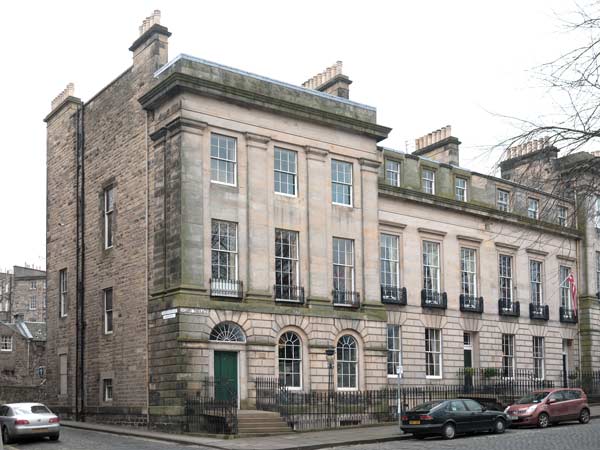
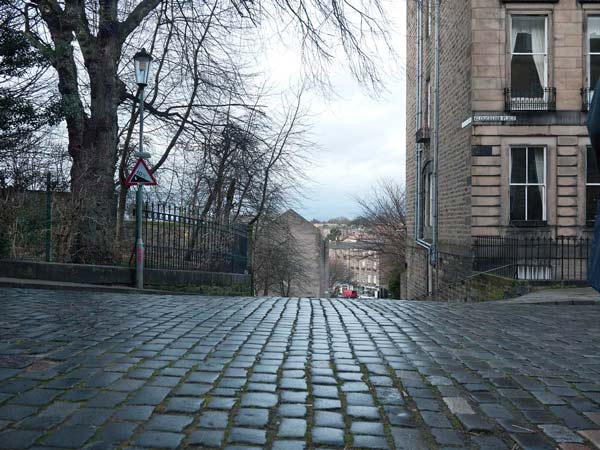
Because of the long period of development, New Town is really a collection of several small developments that run into one another with gardens (surrounded by railings and locked gates) dotted about.
And because it is so well preserved and was so finely built, it is now a UNESCO World Heritage site.
Living In The Ruins Of Former Glory
The Scots do not cover their windows like the English do. That gives the passing snooper a wonderful opportunity to see how well furnished the apartments and houses are.
I can tell you that some are very finely furnished. But many, many houses are in a poor state internally. There are beds in living rooms, abandoned rooms, old fittings, wardrobes piled up, weak and ancient light fittings.
It is as though the comparatively impoverished occupants of modern times are living in the ruins of the former glory of a bygone age.
And while I like walking around New Town and taking in the architecture, I cannot shake the feeling that it is has its back to the sun and would rather be up and across the valley facing south.
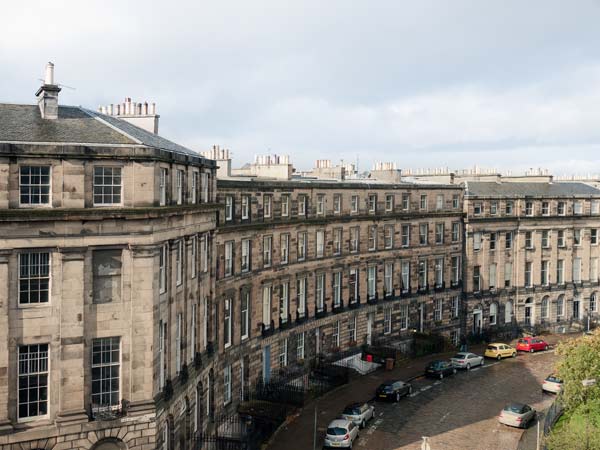
St. Vincent Street
In their long runs down from Princes Street, the streets that lead down to New Town change their names several times. So, for example, Frederick Street becomes Howe Street, which becomes St. Vincent Street.
And at the bottom of St. Vincent Street and visible from way up the hill hundreds of yards away is St. Stephens church. As you can see, the street is cobbled. And on the left is railing overgrown with trees of one of the many gardens in New Town.
Local residents can apply for a key to the gardens which is given for a modest yearly fee.
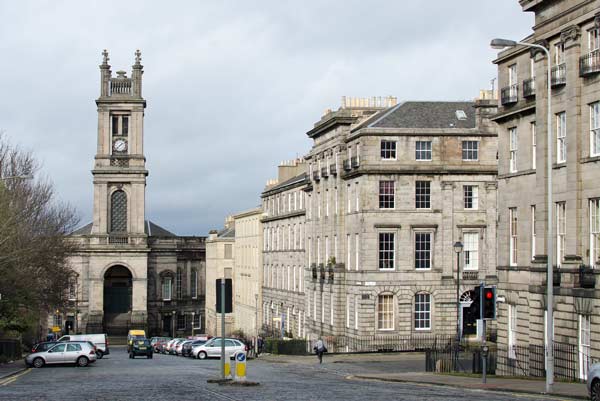
Looking Out Over New Town
New Town can look very romantic and it can also look rather austere.
So let’s finish with segments of a poem by Pablo Neruda and one of our ecards that we made by pairing the final lines of Neruda’s love poem with a view over New Town.
Love
I ache for you in gardens of blossoming flowers
I have forgotten your face
I remember your hands
How did your lips feel on mine?Because of you I love the white statues that sleep in parks
White statues that neither speak nor lookYour caresses enfold me like vines climbing on walls
I have forgotten your love
but I seem to glimpse you behind every window
